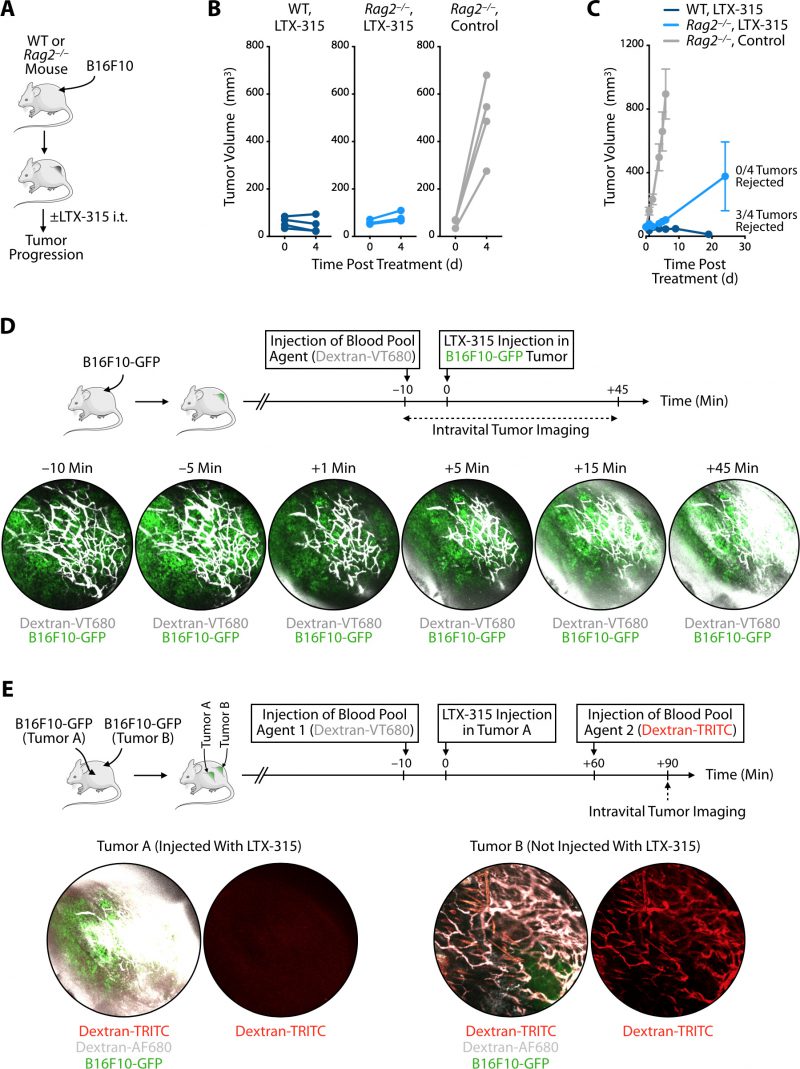Back to article: LTX-315 sequentially promotes lymphocyte-independent and lymphocyte-dependent antitumor effects
FIGURE 2: LTX-315's initial phase of antitumor response is defined by rapid disruption of the tumor vasculature and occurs independently of lymphocytes. (A) Schematic of B16F10 melanoma experiments: Rag2–/– or control wild type (WT) mice bearing B16F10 melanoma tumor grafts were either treated intratumorally (i.t.) with LTX-315 or left untreated. (B) B16F10 tumor volumes immediately before (d0) and four days after LTX-315 treatment (d4) in individual WT mice (dark blue) and Rag2–/– mice (light blue). Untreated Rag2–/– mice (grey) were used as controls; n = 4 mice/group. (C) Cumulative B16F10 tumor volumes over time of mice treated as in (B). (D) Intravital microscopy of a vasculature agent (Dextran-VT680, white) at different time points before and after intratumoral LTX-315 injection in mice bearing B16F10-GFP melanoma tumors (green). (E) Intravital microscopy of two vasculature agents (Dextran-VT680, white; Dextran-TRITC, red) in mice bearing two B16F10-GFP melanoma tumors (Tumors A and B) and after intratumoral LTX-315 injection in Tumor A only. Dextran-VT680 was injected 10 min before LTX-315 administration, whereas Dextran-TRITC was given 60 min later. Abbreviations are as follows: d = day.

